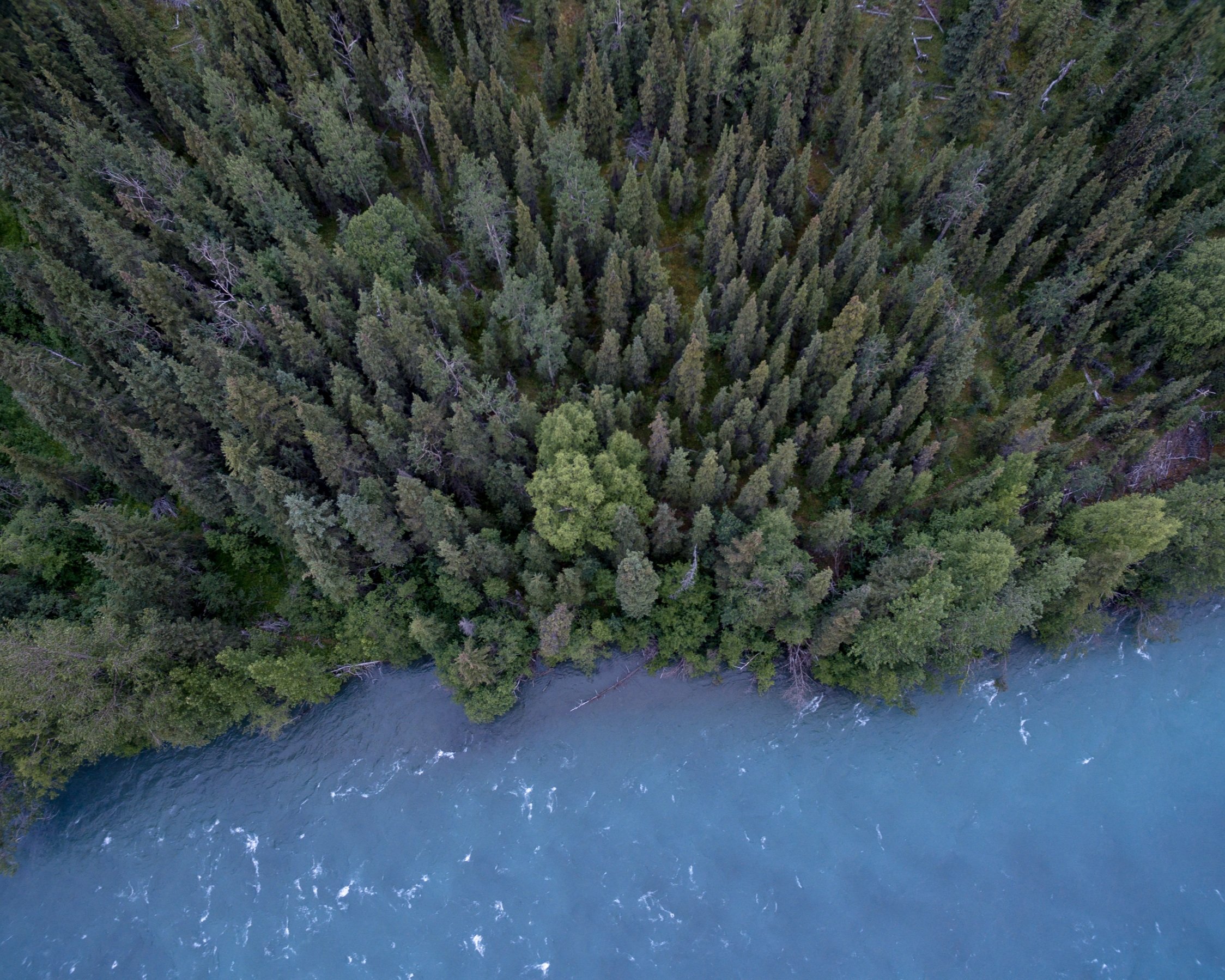The Alexander Archipelago wolf (Canis lupus ligoni) occupies most of southeast Alaska from Yakutat Bay to Dixon Entrance except for Admiralty, Baranof, and Chichagof Islands. Based on common cranial characteristics, the Alexander Archipelago wolf was considered by early taxonomists to be a distinct subspecies. Recent taxonomic work suggests that these wolves may have originated from a larger subspecific group (C. l. nubilus) that at one time inhabited most of the contiguous Western United States. Wolves probably entered southeast Alaska sometime after the Wisconsin glaciation, following the northward expansion of black-tailed deer (Odocoileus hemionus) along the coast. The hypothesis of a southern origin is supported by recent genetic research showing that wolves in southeast Alaska share a common allele not found in a sample of wolves from interior Alaska or the Yukon. The population is relatively isolated from other wolf populations by water and mountain barriers. (from Person et al Conservation Assessment, see below)
Logging poses a severe threat to the ecosystem. Alexander Archipelago wolf photo above courtesy of John Hyde.
(Remainder Excerpted from Schoen and Person, 2007*) As a result of the isolated and naturally fragmented geography of Southeast Alaska, the Alexander Archipelago wolf (Canis lupus ligoni) is potentially more sensitive to human activity and habitat disturbance than elsewhere in the state. This greater sensitivity is particularly a concern in the southern archipelago where deer populations are strongly influenced by the loss and fragmentation of old-growth forest habitat.
About 296,000 acres have been logged on Prince of Wales and adjacent Islands. As young clearcuts close over, habitat quality will be diminished and deer numbers will decline. Declining deer populations will stimulate more pressure by local hunters and trappers for reducing wolf numbers. The expanding road system will further increase hunting and trapping pressure on local wolf populations.
Person et al. (1996) documented wolf mortality on Prince of Wales Island greater than 45% during some years. An expanding road system will enhance human access and increase both legal and illegal hunting and trapping of wolves in a region where enforcement is difficult. Therefore, wolf populations on Prince of Wales and adjacent islands will face two significant problems: declining abundance of deer and increasing risk of intensive and unsustainable hunting and trapping mortality.
The wolf population in Southeast likely numbers fewer than 1,000 animals. This population is further subdivided into mainland and island populations, potentially increasing the risks of maintaining viability for some population segments.
Conservation measures necessary to maintain viable and productive wolf populations in the southern archipelago should include (within each biogeographic province where wolves occur) the maintenance of large blocks of high-quality deer habitat, including medium and large-tree old growth at lower elevations. These reserves should also prohibit or minimize road access to prevent overharvest of local wolf populations. In some areas with extensive logging and road infrastructure, road access may need to be closed and forest restoration activities initiated.
To many people, both in Alaska and the lower 48 states, Alaska wolves represent a symbol of wilderness and ecosystem integrity. In some of the lower 48 states, wolf populations are listed as endangered or threatened under the Endangered Species Act and in others they were recovered but at great expense and effort. Alaska has the opportunity and responsibility to avoid the mistakes that lead to this situation in the lower 48 states. Because of its large area requirements and ecological position as a top-level carnivore, the wolf represents an important umbrella species for maintaining ecosystem integrity throughout its range in Southeast. And because of its vulnerability to cumulative human activities, the wolf also serves as an indicator of wildland values. These attributes justify identifying the wolf as a focal species for ecosystem management throughout its range in Southeast and the Tongass National Forest.
*Schoen, J. and D. Person. Alexander Archipelago wolf. In: Schoen, J.W. and E. Dovichin (editors). 2007. A Conservation Assessment and Resource Synthesis for The Coastal Forests & Mountains Ecoregion in Southeastern Alaska and the Tongass National Forest. Audubon Alaska and the Nature Conservancy. Anchorage, AK. Chapter 6.4.
OUR WORK TO PROTECT alexander archipelago wolves
Alexander Archipelago Wolf Resources
AWA Publication Alexander Archipelago Wolves. The information found on this web page, plus links to additional resources.
Alexander Archipelago Wolf: A Conservation Assessment Person et al 1996.
A must-read for background information on the AA Wolf situation: Statement of David K. Person Regarding the Big Thorne Project, Prince of Wales Island, 2013.
Going Coastal: Shared Evolutionary History between Coastal British Columbia and Southeast Alaska Wolves, Weckworth et al 2010 PDF format. (325KB)










Bill Sherwonit’s piece on 2019/2020 Prince of Wales wolf overharvest